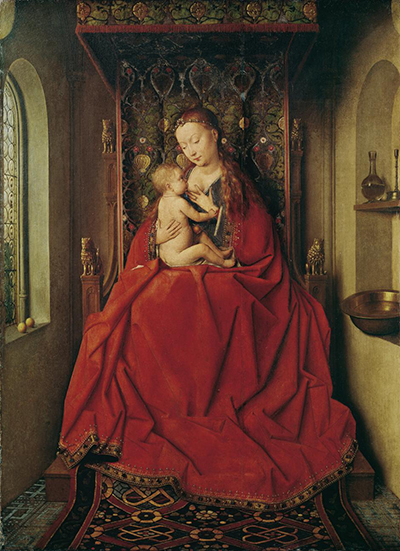The Lucca Madonna is dated at around 1436/1437 and may initially have been part of a larger Van Eyck triptych
The artist produced portraits of the Madonna and Child on several occasions and in this piece it is a very personal scene where the mother breastfeeds her son. It can now be found at the Städel Museum in Frankfurt, Germany. At a particularly small size (around half a metre tall and wide), this painting may well have been intended for personal use rather than being displayed publicly.
The scene features an elaborate wooden throne with embroidered inlay. There is also a small canopy which sits above the mother and child. An interesting aspect of this painting is the way in which Van Eyck produced such a crampt composition, with very little room to be seen either side of the throne - what might have been the message behind this? Some have suggested that this was to give the impression of being in a small chapel.
The name of Lucca Madonna refers to its ownership in the more recent centuries of its existence and this is a common method of differentiating work from around this period. It was specifically part of the collection of Charles II, Duke of Parma and Lucca around the 19th century, from which its title came.
Margaretha van Eyck was the model for this particular painting and she would appear again in other works by Jan van Eyck. The artist was famous for using iconography within the background elements of his portraits and this painting is no different in that regard. The small lion statues, for instance, is a reference to the throne of Solomon, strengthening this painting's religious connection. There are considerable religious studies and texts which tackle this symbolism in greater detail.
Van Eyck continued his use of Madonna in other works such as his Dresden Triptych, The Madonna in the Church and the world famous The Madonna of Chancellor Rolin that remains in the Louvre. Religious themes dominated all regions of the Renaissance during this time but Van Eyck was someone who would also produce work that was unconnected to any religious teachings too.




